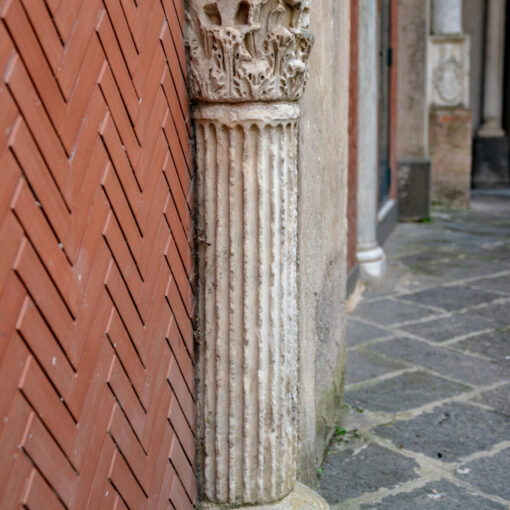Palazzo Castriota, home of the noble Albanian family Castriota Scanderbeg, consists of three floors. The architectural structure shows clear signs of the late 15th-century Gothic period. The building inside cannot be visited, but it is possible to admire the exterior façade of the palace that faces Amalfi’s main street.
The Church of the Holy Spirit, built on the riverbank in 1576, once stood below the building. All that remains of this church – which, until 1939, was also the seat of the Confraternita dei Cartari – is a massive wall with a series of interlaced arches, the remains of a small 13th-century cloister.
The palace has undergone numerous restorations and extensions; on the outside, two large columns support a balcony decorated with marble trabeations and friezes. The internal hallway has a cross-vaulted ceiling, whose space is punctuated by pointed arches, column drums, Roman-era capitals and numerous marble coats of arms embedded in the walls. On the front wall of the entrance hall, two frescoes painted in the 1930s by the Amalfi painter Ignazio Lucibello – pupil of Pietro Scoppetta – depict King Roger II’s speech to the people of Amalfi in the town square, and the Knights of St. John of Jerusalem fighting against the Turks in defence of the Holy Sepulchre.



